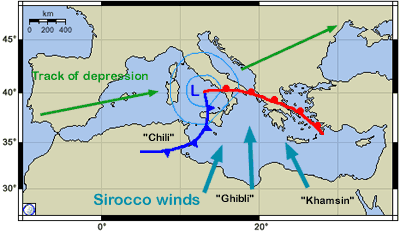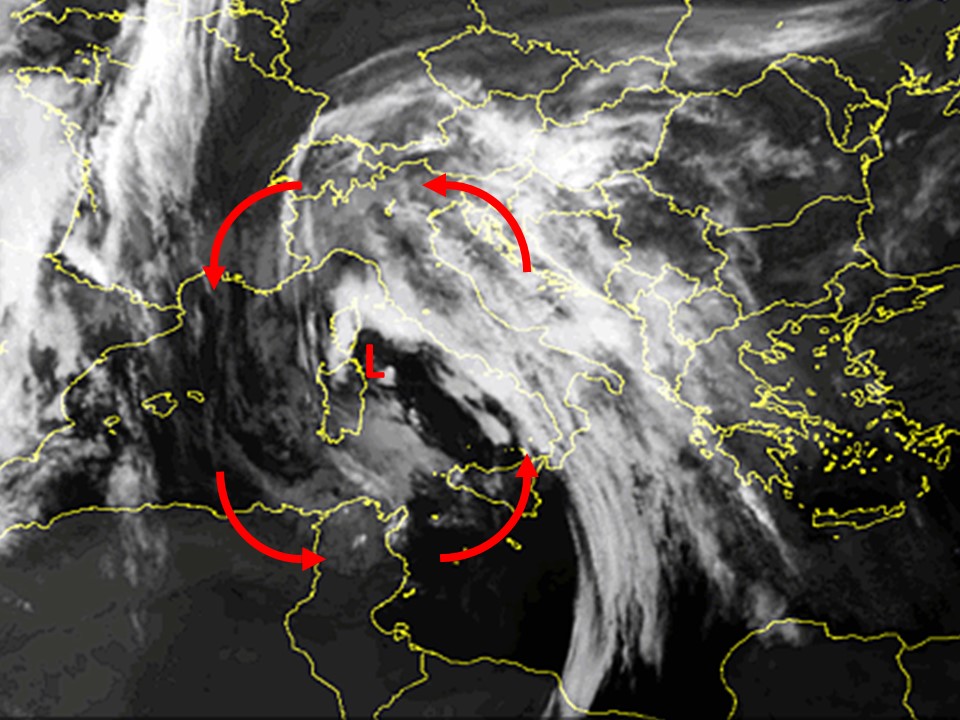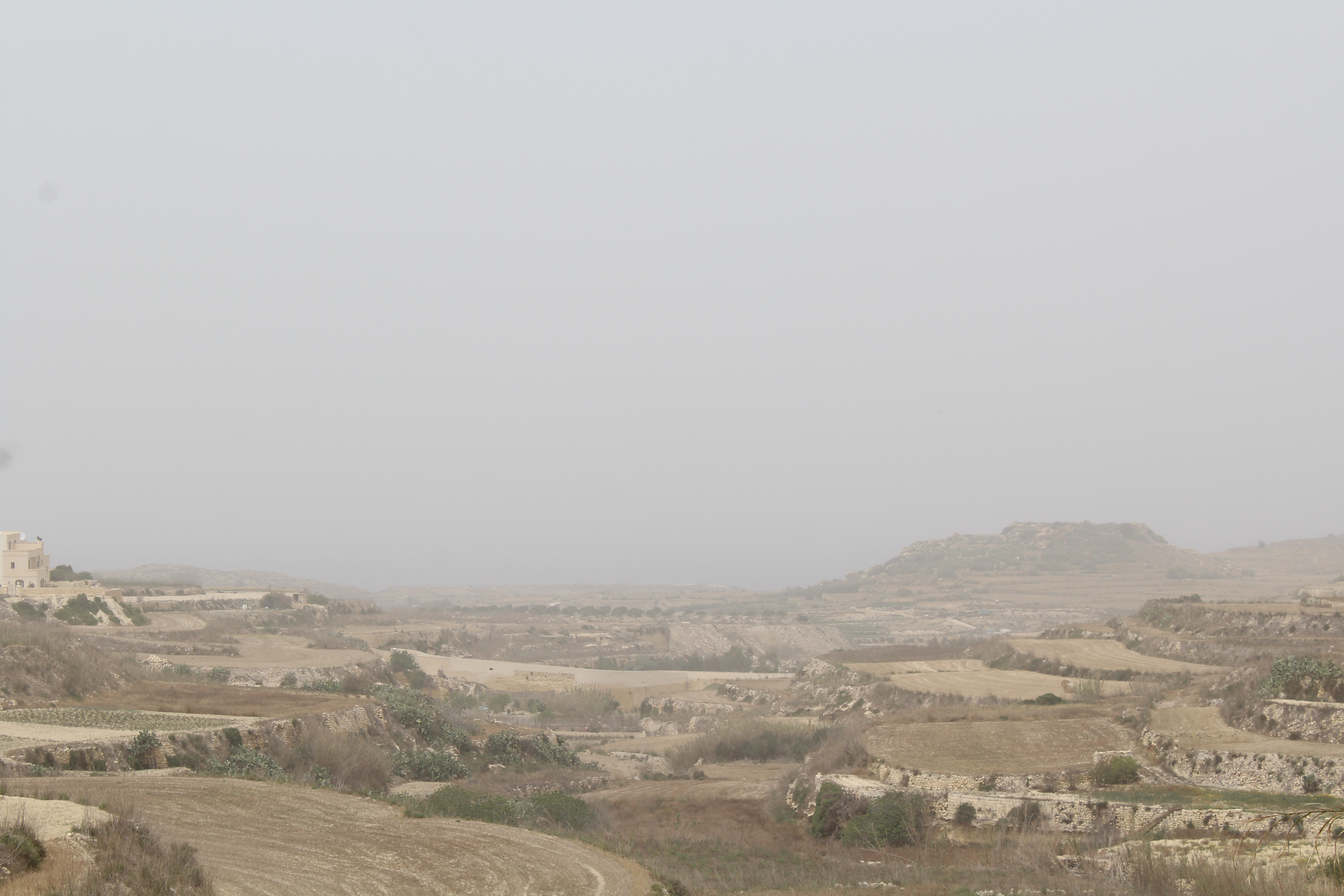
The atmosphere around the Maltese Islands is choked with fine desert sand from the Sahara Desert today. Ever wondered how it ends up here?
Transport of Fine Desert Sand
Airborne fine desert sand in the atmosphere around the Maltese Islands typically occurs on a day characterised by a Scirocco wind. The term Scirocco is an all-inclusive name given to hot and subsequently humid southeast to southwest winds originating over northern Africa and flowing into the southern Mediterranean basin. Sciroccos occur in advance of a low pressure system moving eastward across the southern Mediterranean Sea or northern Africa. Air from high pressure over the Sahara Desert rushes in to fill this low pressure system https://polska-ed.com/kupic-generic-cialis/. The rushing air manifests itself as a Scirocco.

Strong Sciroccos over the Sahara Desert whip up large amounts of fine desert sand, causing sandstorms across north Africa. When the center of an intense low pressure system happens to be traversing the region affected by sandstorms, it acts as a funnel which sucks the airborne fine desert sand and transports it far north, towards the southern Mediterranean Sea. Our islands happen to be located in an area which frequently experiences this kind of meteorological scenario. It is particularly common in spring, but can occur at any point during the year.

Deposition of Fine Desert Sand
As the airborne fine desert sand is transported across our region, the atmosphere attains a reddish hue. At ground level, it manifests itself as a reddish mist. Airborne fine desert sand is deposited in dry form this way.
It is also deposited in copious amounts with rain. Water vapour in the atmosphere requires a non-gaseous surface to make the transition from a vapour to a liquid. This transitional process is called condensation. This non-gaseous surface presents itself as tiny solid or liquid particles called Cloud Condensation Nuclei. When abundant, the airborne fine desert sand acts as a particle onto which water vapour can condense. As a result, when the rain falls, it drags down with it the sand particle. Once the rain dries up it leaves behind the sand particle.



0 comments
Write a comment